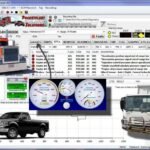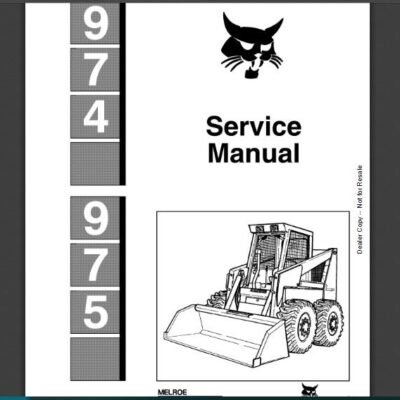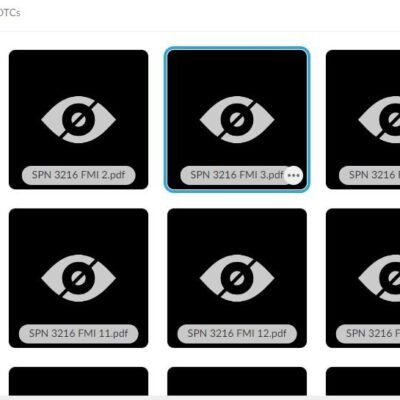DIAGNOSTIC RESPONSE:
Use default engine coolant values
CIRCUIT DESCRIPTION:
The Transmission Control Module (TCM) receives an input from an Engine Coolant Temperature (ECT) sensor. The TCM supplies a 5V reference voltage signal into a voltage-sensing network that is connected to one side of the ECT sensor on W135. The other side of the ECT sensor is connected to the TCM analog ground on W158.
The resistance value of the ECT sensor determines the voltage drop in the ECT sensor circuit. As resistance changes, the voltage drop across the ECT sensor circuit also changes and varies the ECT sensor input voltage on W135. The TCM uses engine coolant temperature information to restrict retarder operation when an engine coolant overheat condition is detected.
CONDITIONS FOR RUNNING THE DTC:
1. After TCM initializes normally and engine speed is above 200 rpm for more than 5 seconds, this DTC test runs at 0.25 second intervals.
2. Retarder and ECT sensor autodetected or forced present by CMC (Override Retarder Autodetect//Override Engine Coolant Source).
3. This test is disabled for this ignition cycle when a failure is reported for this DTC or DTC P2185.
4. The retarder reduction and preselect, based on engine coolant temperature feature, is enabled in the calibration.
CONDITIONS FOR SETTING THE DTC:
The TCM detects engine coolant temperature greater than 149°C (300°F) for more than 10 seconds.
ACTION TAKEN WHEN THE DTC SETS:
When DTC P2184 is active, the following conditions occur:
1. The TCM does not illuminate the CHECK TRANS light.
2. DTC is stored in TCM history.
3. TCM uses default engine coolant temperature values.
CONDITIONS FOR CLEARING THE DTC/CHECK TRANS LIGHT:
Use the diagnostic tool to clear the DTC from the TCM history. The TCM automatically clears the DTC from the TCM history if the vehicle completes 40 warm-up cycles without failure.
DIAGNOSTIC AIDS:
DTC P2184 may be caused by:
1. Incorrect transmission fluid fill.
2. W135 shorted to ground, or shorted to another wire in chassis harness.
3. Broken or defective connector assemblies allowing pushed back pins to short together.
4. Unlocked connectors, missing seal plugs allowing moisture in connectors.
5. Defective ECT sensor.
6. Defective TCM.
7. High transmission fluid temperature.
8. Inadequate or obstructed vehicle cooling system.
9. Non-bypassed engine coolant thermostats that are not opening in time may cause overheat condition for transmission fluid temperature. Monitor transmission fluid temperature using the diagnostic tool and review transmission overheat and retarder information in General Troubleshooting of Performance Complaints.
The ECT sensor resistance is available on the diagnostic tool Data Monitor grid. Prior to ‘Connect’ for the diagnostic tool, check the ‘Troubleshoot Specific Problem’ box under “Connection Options” and then check the ‘Sensor, Voltage, Ohms, and Counts Data’ box.
Check if ECT sensor resistance is increasing, decreasing, or stationary with fluctuations in fluid temperature.
Refer to DTC P2740 and DTC P0218 or General Troubleshooting of Performance Complaints as guidelines for troubleshooting vehicle cooling issues.
Review applicable information in Control System and Transmission Specifications to find additional circuit specifications, system and connector diagrams, and troubleshooting tips.


 AGCO
AGCO ALLISON
ALLISON BENDIX
BENDIX BOBCAT
BOBCAT CAT
CAT CLAAS
CLAAS CNH
CNH DAF
DAF DETROIT
DETROIT EATON
EATON FREIGHTLINER
FREIGHTLINER HINO
HINO HITACHI
HITACHI ISUZU
ISUZU JCB
JCB JOHN DEERE
JOHN DEERE JPROZZ
JPROZZ MAGIC TUNER
MAGIC TUNER MAN
MAN Navistar
Navistar PACCAR
PACCAR PERKINS
PERKINS PF DIAGNOSE
PF DIAGNOSE PSI POWERLINK
PSI POWERLINK RENAULT
RENAULT SCANIA
SCANIA THERMO KING
THERMO KING UD NISSAN
UD NISSAN VOLVO
VOLVO WABCO
WABCO ZF TESTMAN
ZF TESTMAN
 BELL
BELL BENDIX
BENDIX BOBCAT
BOBCAT CARRIE
CARRIE DAF
DAF DETROIT
DETROIT EATON
EATON FUSO
FUSO MACK
MACK
 Cumminz
Cumminz ISB4.5 CM2150
ISB4.5 CM2150 All Engines (2017 Emissions)
All Engines (2017 Emissions) PACCAR
PACCAR


![The DOOSAN Diagnostic Tool DX22 Electronic Marine DCU Analyzer 01.00 R4 [2024.04] is a specialized software for diagnosing marine engines. It simplifies the process of identifying issues in electronic control units, enhancing maintenance efficiency. With features like real-time data analysis and easy software updates, the DX22 adapts to various marine applications. This tool is essential for ensuring the optimal performance of marine machinery and can also be used for heavy truck diagnostics.](https://ecmtrucks.com/wp-content/uploads/2024/08/Capture-1-300x226.png)

![The Doosan Diagnostic Tool DL06 DL08 Stage V 02.15 R2 [2024.02] is an essential software solution for diagnosing heavy machinery. It offers advanced capabilities suited for the latest Doosan models with a focus on efficiency and compliance. This tool features a bilingual interface in English and Chinese, ensuring accessibility for a diverse user base. It supports real-time performance monitoring and provides detailed reporting, making it an invaluable asset for maintenance and operational efficiency.](https://ecmtrucks.com/wp-content/uploads/2024/08/1-400x400.png)




![The Hitachi Construction Machinery MPDr Ver 3.7.0.0 [10.2020] Diagnostic Software optimizes operations in heavy construction machinery. With advanced diagnostics, seamless integration with Hitachi equipment, and a focus on efficiency and productivity, it enhances performance in the industry. Trust the reliability of Hitachi Construction Machinery for this powerful software solution. Learn more about its features, benefits, and how it can benefit your operations at ecmtrucks.com. Increase efficiency with Hitachi Construction Machinery MPDr Ver 3 7 0 0.](https://ecmtrucks.com/wp-content/uploads/2024/01/MPDR-3.7.00-400x400.webp)






Reviews
Clear filtersThere are no reviews yet.